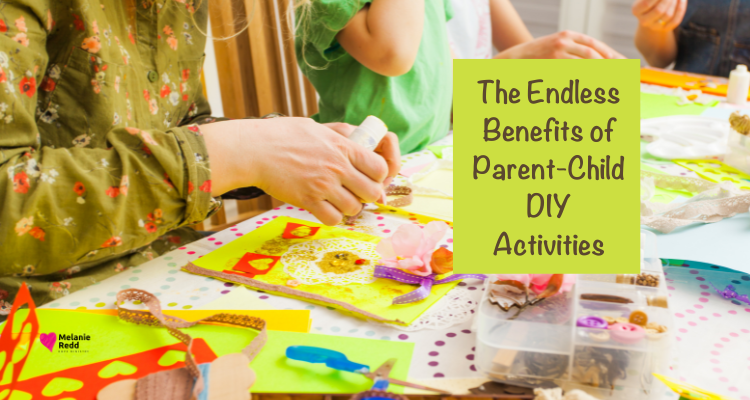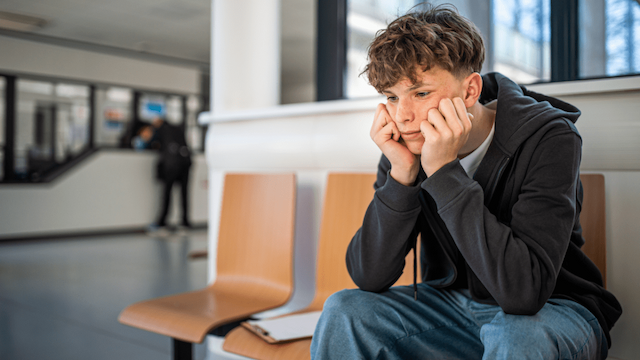The Endless Benefits of Parent-Child DIY Activities

The Endless Benefits of Parent-Child DIY Activities
In the hustle and bustle of modern life, finding meaningful ways to connect with our children has never been more crucial. One avenue that often goes overlooked is the world of do-it-yourself (DIY) crafting activities.
Beyond the glue and glitter, engaging in creative pursuits with your kids offers a plethora of benefits. These benefits extend far beyond the finished masterpiece.
In this article, we’ll explore the multifaceted advantages of parent-child crafting, highlighting how these shared activities contribute to stronger bonds, stimulate creativity, and provide essential life skills.
The Endless Benefits of Parent-Child DIY Activities – Building Stronger Bonds Through Crafting
Crafting with your children creates a unique space for bonding that transcends the ordinary routines of daily life. Whether it’s painting, sculpting, or simple paper crafts, the shared experience fosters a sense of togetherness.
During these moments, parents have the opportunity to engage in open communication, providing a comfortable environment for children to express themselves and share their thoughts. The act of crafting side by side encourages collaboration and problem-solving, reinforcing the idea that working together yields beautiful results.
Parents actively participate in the creative process and gain insights into their children’s interests, strengths, and challenges. This understanding forms the foundation for a deeper connection, as it communicates to the child that their parent values and invests time in shared activities.
Stimulating Creativity and Imagination
Creativity is a skill that extends beyond the canvas or craft table; it's a vital aspect of problem-solving, critical thinking, and innovation.
Engaging in DIY activities with children stimulates their imaginations, encouraging them to think outside the box and explore unconventional solutions. Craft projects provide a safe space for experimentation, where mistakes are not failures but opportunities for learning and improvement.
Encouraging creativity through crafting also teaches children to embrace and celebrate their unique perspectives. Whether it’s choosing colors, deciding on shapes, or inventing new ways to use materials, children learn that their ideas are valid and valuable. This empowerment fosters a positive self-image and confidence in their abilities, traits that extend into various aspects of their lives.
Life Skills Unveiled in Glue and Paint
Crafting activities inherently involve a series of skills that are useful in the artistic realm and translate into valuable life skills. Fine motor skills are honed through the intricate movements required for cutting, pasting, and drawing. Following instructions in a crafting project builds patience and attention to detail, crucial attributes in academic and professional pursuits.
Additionally, crafting often involves problem-solving, especially when unexpected challenges arise during a project. Children learn to adapt, improvise, and persevere in the face of difficulties. These skills form the foundation of resilience and a growth mindset, instilling in them the belief that challenges are opportunities for growth and improvement.
Engaging in crafts with your kids, whether it’s as straightforward as selecting the appropriate tool or as intricate as replacing a sewing needle, nurtures problem-solving skills, preparing them for handling more intricate situations.
Emotional Development and Expression
Crafting provides a canvas for emotional expression and self-discovery. Children who might find it challenging to articulate their feelings verbally can use art to express complex emotions.
Whether it’s the choice of colors, the intensity of brush strokes, or the overall composition of their creation, every aspect becomes a reflection of their emotional state.
For parents, observing these expressions offers valuable insights into their child’s emotional well-being. It opens avenues for conversations about feelings, fears, and joys, creating a supportive environment for emotional growth.
Truly, crafting can be a therapeutic outlet, allowing children to process emotions tangibly and creatively.
The Endless Benefits of Parent-Child DIY Activities – Creating Lasting Memories
Crafting sessions become cherished memories that both parents and children carry throughout their lives. The shared laughter, the triumphant completion of a project, and the inevitable messes become stories that families reminisce about for years to come. These memories serve as a testament to the time and effort invested in the relationship, creating a rich tapestry of shared experiences.
As children grow, these memories contribute to a positive and enduring connection with their parents. The traditions established through crafting—whether it’s a weekly art night or a special project on birthdays—become touchstones that children carry into their parenting journeys.
Practical Tips for Crafting Success
For parents eager to incorporate more crafting into their family routines, a few practical tips can enhance the experience:
Create a Dedicated Crafting Space
Set up a designated area for crafting to minimize distractions and encourage focus. Having a dedicated space also makes it easier to leave projects in progress, allowing for continuity in the creative process.
Embrace the Mess
Crafting can be messy, and that’s part of the fun. Embrace the inevitable spills and scattered materials as opportunities for learning and creative exploration.
Keep it Age-Appropriate
Tailor crafting activities to the age and developmental stage of your child. Younger children may enjoy simpler projects, while older ones may appreciate more complex challenges.
Celebrate the Process, Not Just the Result
Emphasize the creative journey rather than the final product. Encourage experimentation, and let your child’s imagination take the lead. The value lies in the experience and the shared time, not in achieving perfection.
Encourage Autonomy
Allow your child to make choices during crafting sessions. From selecting materials to deciding on the theme of the project, fostering autonomy enhances their sense of ownership and pride in their creations.
Crafting Memories, Strengthening Bonds
In the realm of parent-child relationships, crafting isn’t just about creating art; it’s about crafting connections that withstand the test of time. The benefits extend far beyond the colorful projects adorning the refrigerator.
Through shared creativity, parents build stronger bonds with their children, stimulate their imaginations, impart essential life skills, and create lasting memories.
So, the next time you find yourself reaching for the glue and paint, remember that you’re not just crafting a masterpiece; you’re crafting moments that will be treasured for a lifetime.
Were you encouraged by what you read?
Then, would you share this article with a friend, co-worker, or family member?
Or, maybe you can send it to a friend or family member?
This blog occasionally uses affiliate links and may contain affiliate links.
Melanie Redd also participates in the Amazon Services LLC Associates Program.
This is an affiliate advertising program designed to provide a means for sites to earn advertising fees. These are earned by advertising and linking to amazon.com.
Also, for more on my disclosure policy, click HERE.
© Melanie Redd and Hope Ministry, 2024. Unauthorized use and/or duplication of this material without express and written permission from this blog’s author and/or owner is strictly prohibited.
Further, excerpts and links may be used, provided that full and clear credit is given to Melanie Redd and Hope Ministry.
Please give appropriate and specific directions to the original content.





